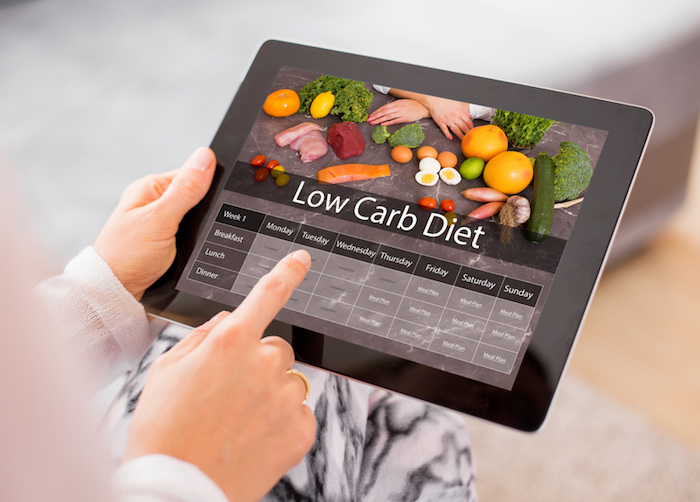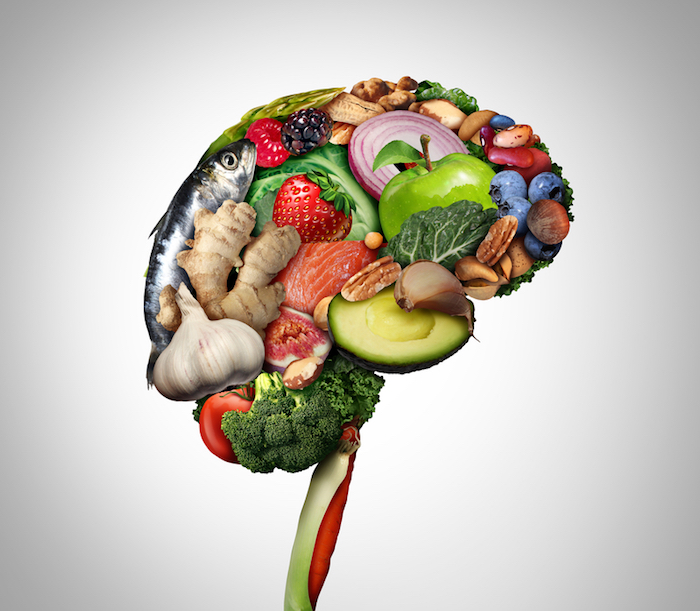- Calls to this hotline are currently being directed to Within Health or Eating Disorder Solutions
- Representatives are standing by 24/7 to help answer your questions
- All calls are confidential and HIPAA compliant
- There is no obligation or cost to call
- Eating Disorder Hope does not receive any commissions or fees dependent upon which provider you select
- Additional treatment providers are located on our directory or samhsa.gov
What are the Effects of Fad Diets?
Dieting is a topic so rampant in American society that no one bats an eye when they hear someone talk about them. Divulging information about one’s individual experiences of weight, body, fitness, food intake, and exercise are accepted as appropriate social conversations. The belief is that discussing these things will help each individual find the “answer,” AKA the magical diet and exercise regime that will fix them or their life. That if they restrict enough, cut out enough, or work out enough, they will find happiness, fulfillment, and success. One-half of the adults in the United States chase this dream annually through attempts at dieting to lose weight [1]. This statistic is bleak enough yet becomes even more saddening when one learns that at least 80% of these individuals will not be able to maintain dieting behaviors or weight loss after a year [2]. The weight loss occurs but the happiness does not come, the weight returns and the self-shaming follows, therefore, the attempts at weight loss begin again. This vicious cycle is trapping too many and leading to dangerous physical and emotional consequences that last longer than the diets themselves.
What is a Fad Diet?
Fad diets did not begin in the United States or even in Western culture alone. In fact, dieting has a long history in humanity. Alterations to nutrition have existed for centuries but it wasn’t until the 19th century that individuals began altering their nutrition for aesthetic purposes [3]. Now, there are so many dieting fads parading themselves as “non-diets” and “lifestyle changes” that recognizing what is a diet and what isn’t is difficult. The CDC provides a rough definition of a fad diet as “any weight loss plan that promises quick results and is usually a temporary nutritional change [3].” Beyond this, one publication provided criteria to help sort this out, noting that diets share the following common characteristics:
- They “promise fast weight loss…without giving away fatty, rich-in-calories food and without the need to regularly exercise [3].”
- Fad diets “limit the range of food types included in the meal plan and do not reassure a balanced and healthy diet [3].”
- They “propose „miracle‟ foods that need to be consumed in abnormal quantities and help fat-burning with a minimal effort [3].”
Types of Fad Diets
The same publication mentioned above from the Journal of Food Research also identified 3 typical “types” of fad diets. Not all diets will fall into these categories, however, these encapsulate the most common types of diets at present.
- Low/No-Carbohydrate Diets: In these diets, low or no carbohydrate intake is required and high protein/fat intake is encouraged [3]. These diets are often popular because rapid weight-loss occurs. Many are unaware that this rapid weight loss is actually due to losing water weight. Due to this, it is “common that the weight is gained back once the diet is discontinued as the body tries to ‘correct’ the water imbalance [3].” Examples of this type of dieting include the Atkins, Dukans, South Beach, Grapefruit, and Keto diets [3].
- High-Carbohydrate/High-Fiber Diets: These diets are also popular but have severe consequences. Examples of this diet include the Pritikin diet plan or the “Save-Your-Life” diet [3].
- Liquid Diets: These diets involve extremely low caloric intake (400-500 calories) yet promise to provide the body with necessary nutrients. Examples of this are shakes (such as SlimFast) or juice cleanses.
- Very Low-Calorie Diets: These diets are popular and incredibly dangerous as they are essentially self-starvation. The Cambridge Diet is an example of this [3].
- Sole-Intake Diets: These diets might encourage an individual to consume only one type of food and have severe health consequences. Examples of this are the Cider Vinegar and Vitamin B6 diets [3].
Fad Diet Statistics and Facts
There is a movement of backlash toward diets that has led to a great deal of research being conducted on their impact and effectiveness. The following is known about diets:
- “In 2013–2016, 49.1% of U.S. adults tried to lose weight in the last 12 months [1].”
- More women than men tried to lose weight from 2013-2016 with 56.4% of women trying versus 41.7% of men [1].
- “A lower percentage of non-Hispanic Asian adults (41.4%) than non-Hispanic white (49.4%), non-Hispanic black (48.0%), and Hispanic (49.1%) adults tried to lose weight [1].”
- The amount of adults attempting weight loss increased with family income as well as weight status category [1].
- From 2013-2016, 62.9% of individuals attempted to lose weight by eating less food (62.9%) and 50.4% attempted to lose weight through consuming more fruits, vegetables, and salads [1].
- Younger adults are less likely to be on a diet than older adults, with 13.3% of those ages 20-39 on a diet, 19.2% of people ages 40 to 59 on a diet, and 19.3% of people ages 60 and older being on a diet [2].
- Only 20% of people are successful at maintaining weight-loss long-term [4].
- 80% of those that try diets are unsuccessful at maintaining weight-loss long-term [4].
Related Reading
- Foods That Will Make You Feel Good
- How Your Metabolism Functions
- Physical Cues of Hunger and Satiety
- Dietitian Crafted Meal Plans
- Misconceptions of Healthy Eating
- Mindful Eating and Appetite Awareness
- Nutrition Care Process and Assessment
- How Your Body Uses Nutrients
- How Much Food Should I Eat?
- Shifting Body Image During BED Recovery
The Dangers of Fad Diets
Considering the statistics above regarding the success of diets might be enough to convince individuals to ditch the diet mentality, If you need further convincing, read below to learn that not only do diets have no pros, they have a great deal of cons.
Long-Term Health Risks of Fad Diets
To see the negative impacts of dieting behaviors, one does not need to look further than the body itself. Dieting behaviors directly involve depriving the body of certain vitamins and nutrients that it needs to survive. What nutrients will depend on the diet and also change the physical consequences. For example, the high-carbohydrate/high-fiber diets mentioned above encourage “low levels of both proteins and fats, which can lead to reduced immunity and problematic wound healing [3].” The low/no-carbohydrate diets discussed lead to “ketone formation in excess amounts as a result of incomplete fat breakdown and dehydration. Ketones are stored in blood and can even lead to death if the diet is continued long-term [3].” The “self-prescribed starvation” of very low-calorie or liquid diets can “be linked with health risks and serious illnesses such as anemia, reduction of vitamins and minerals supply, fatigue as well as weakness and dizziness [3].”
Further, “studies have shown that high-fat/high-protein diets, like The Atkins diet, also result in higher risk of heart disease, colon cancer, bad breath, and sleeping disorders [3]. Very low calorie diets also lead to “constipation due to low fiber intake (68% of participants), bad breath (63%), headache (51%), hair loss (10%) and increased menstrual bleeding (3%) [3].”
High-protein diets lead to “an increased acid load to the kidney, maximizing the possibility of stone formation and a decrease of calcium balance leading to bone loss and osteoporosis” after just 6 weeks [3]. They are also related to “loss of calcium through the urinary tract, which could predispose to bone loss long-term [3].”
Fad Diets & Mental Health
Our brain and body are indelibly linked and depend on one another for optimal functioning. Alteration of nutrition, therefore, undoubtedly impacts the brain’s functioning as well as one’s mental and emotional health.
Due to this, research finds that “constant dieting (yo-yo dieting) is associated with a range of symptoms such as food obsession, constant calorie counting, distractibility, increased emotional responsiveness and fatigue [3].” Additionally, “chronic dieters also tend to overeat, have low self-esteem as well as suffer from some eating disorders and depression [3].”
Dieting has a significant impact on children and youth, as they need appropriate nourishment for their development and altering this can cause “complicated consequences in their social and psychological development [3].”
As mentioned above, the cycle of dieting is a cycle of hope, broken promises for fulfillment, worthiness, happiness, and success, and shame and guilt. What this constant cycle does to an individual’s sense of self-worth can be debilitating and lead to numerous interpersonal and mental health issues.
The Connection Between Fad Diets & Eating Disorders
Those that engage in dieting behaviors are proven to be at a higher risk of developing disordered eating [3]. This is unsurprising when considering the cycle above. When an individual pins their hopes of a meaningful life on their ability to alter their appearance and body and they struggle to achieve this physical change, they fear that without it there will be no happiness, love, or success for them. They become desperate to achieve the body they feel they need to have the life they hope for. This desperation can lead to behaviors the individual would never think they would engage in prior to dieting. What may have seemed like a “leap” to engage in a severe behavior becomes more feasible as one commits more-and-more to altering nutritional and exercise behaviors. Essentially, the individual falls “down the rabbit hole” of disordered behaviors and their idea of what is “appropriate” or “going too far” becomes warped.
The line between eating disorders and diets becomes even more blurred due to society’s normalization of eating disorder behaviors. Exercising excessively, losing weight, or altering one’s diet in an attempt to achieve the societal expectation of attractiveness is not only accepted, but glorified. People validate the surface-level changes without recognizing the physical and emotional consequences for the individual are dire.
Fad Diets vs. Healthy Eating
It is worth considering the fact that there is a gray area between the non-diet lifestyle and full-on dieting or disordered eating. This gray area can involve those that need dietary changes to cope and survive with medical disorders. It can also involve the exploration of an individual attempting to engage in “healthy eating.” “Healthy eating” is in quotations because it is a concept more than a definitive idea. What is “healthy” changes for each individual and should be determined by them in connection with tools and skills that help in understanding the needs for their unique body. To learn how to connect with your body and the most appropriate and effective methods of nourishing it, consider seeking support from a Registered Dietitian and/or reading the book Intuitive Eating. These professionals and skills can help you learn how to take care of your body in the best way to live an optimal life not because of your appearance or social acceptance but because you are fueled to live and be alive.
What to do When a Fad Diet Turns into an Eating Disorder
If, through reading this, you have become concerned that your diet, or the diet of someone you love, has turned into an eating disorder, do your best not to panic. Eating disorders are highly treatable illnesses and there is a great deal of support for them these days. Many eating disorder professionals understand the relationship between dieting and eating disorders and how one can turn into the other. To begin your journey out of a disordered and diet-focused life, first reach out to a trusted professional such as Primary Care Doctor or Therapist. They can support you in exploring your experience of your own nutrition. Seeking out an eating disorder educated professional is even better as they are more informed on how to support you and provide you with necessary referrals.
Despite our culture’s obsession with body alteration, dieting, and appearance, it is possible to live a life where your body is the machine that allows you to live, not your reason for living. I encourage you to seek out non-diet educators and professionals, and begin the journey of ditching the diet mentality for good.
Related Reading
- How Safe Is the Keto Diet?
- Is a Low Carb Diet Healthy?
- Is a Plant Based Diet Healthy?
- Is an Anti-Inflammatory Diet Safe?
- Is the 3 Day Military Diet Healthy?
- Is the Atkins Diet Healthy?
- Is the BRAT Diet Healthy?
- Is The Carnivore Diet Healthy?
- Is the DASH Diet Safe?
- Is The Flexitarian Diet Safe?
- Is the Paleo Diet Healthy?
- Is the Grazing Diet Healthy?
Citations
[1] Martin, C. B. et al (2018). Attempts to lose weight among adults in the United States, 2013-2016. Centers for Disease Control. Retrieved from https://www.cdc.gov/nchs/products/databriefs/db313.htm [2] Masters, M. (2021). 70 dieting statistics you should know. LiveStrong.com. Retrieved from https://www.livestrong.com/article/13764583-diet-statistics/. [3] Khawandanah, J., Tewfik, I. (2016). Fad diets: lifestyle promises and health challenges. Journal of Food Research, 5:6. [4] Wing, R. R., Phelan, S. (2005). Long-term weight loss maintenance. The American Journal of Clinical Nutrition, 82:1.
Author: Margot Rittenhouse, MS, LPC, NCC
Page Last Reviewed & Updated by Jacquelyn Ekern, MS, LPC 3.1.2022



